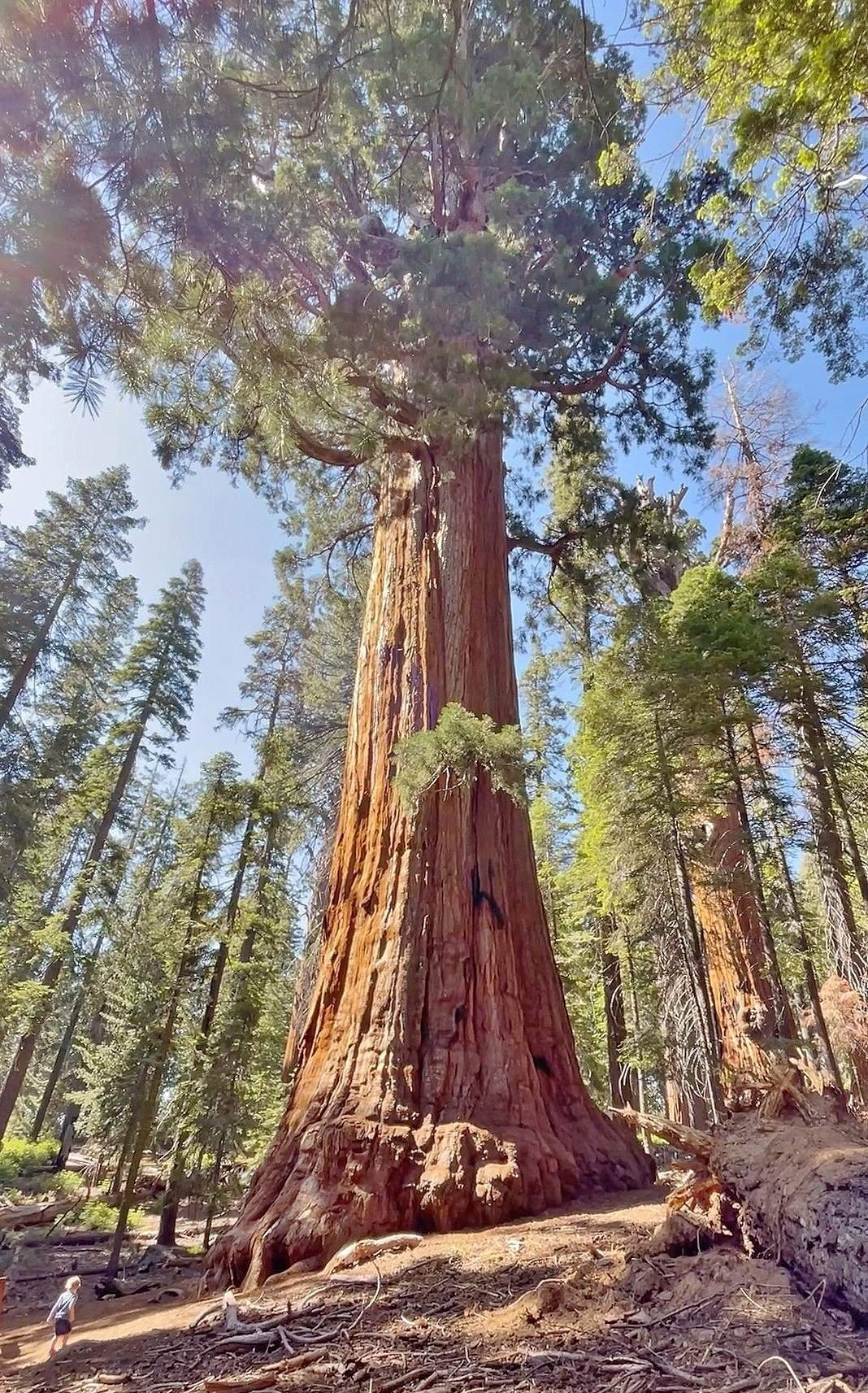The Grand Forest Loop Trail in Sequoia National Park offers a breathtaking journey through ancient sequoia groves, showcasing some of the world’s largest trees. This trail, ranging from 3.0 to 7.6 miles, provides hikers with an immersive experience in the heart of the Giant Forest. With moderate elevation gains and diverse terrain, the trail is suitable for various skill levels and offers stunning views of majestic sequoias, serene meadows, and potential wildlife sightings.
What is the Length and Elevation Gain of the Grand Forest Loop Trail?

The Grand Forest Loop Trail in Sequoia National Park offers flexibility in terms of length and difficulty:
- Shorter Loop: Approximately 3.0 miles
- Elevation gain: About 230 feet
-
Often referred to as the Sherman Tree/Congress Trail Loop
-
Longer Loop: Up to 7.6 miles
- Elevation gain: Around 620 feet
This variety allows hikers to choose a route that best suits their fitness level and time constraints.
How Long Does it Take to Hike the Grand Forest Loop Trail?

The hiking time for the Grand Forest Loop Trail varies depending on the chosen route:
- Shorter Loop: 1-2 hours
- Longer Loop: 3-5 hours
These estimates can vary based on:
– Hiking pace
– Time spent at various points of interest
– Photography stops
– Rest breaks
It’s advisable to allocate extra time to fully appreciate the magnificent sequoias and scenic vistas along the trail.
Where are the Key Waypoints and Trailheads?
The Grand Forest Loop Trail features several important waypoints and intersections:
- Main Trailhead: Located near the General Sherman Tree
-
Accessible from Wolverton Road off Generals Highway
-
Key Intersections:
- Junction with Alta Trail: 1.3 miles from the trailhead
- Junction with Trail of the Sequoias
-
Circle Meadow trail intersection
-
Notable Landmarks:
- General Sherman Tree (world’s largest tree by volume)
- President Tree
- Room Tree
- Tharp’s Log (historic cabin)
- Crescent Meadow and Long Meadow
These waypoints offer opportunities for rest, photography, and appreciating the diverse ecosystems within the park.
What is the Difficulty Level and Terrain Like?
The Grand Forest Loop Trail offers a mix of difficulty levels and terrain types:
| Aspect | Description |
|---|---|
| Difficulty | Easy to moderate |
| Terrain Types | – Paved sections (Congress Trail) – Dirt paths through the forest – Some rocky sections – Root obstacles – Gentle to moderate inclines |
| Potential Hazards | – Steep inclines in some sections – Uneven terrain – Wildlife encounters (e.g., black bears) |
| Skill Level Recommendations | Suitable for beginners to intermediate hikers |
The trail is generally well-maintained, but hikers should be prepared for some elevation gain and varying terrain conditions.
What Do Hikers Say About Their Experiences?
Hikers consistently praise the Grand Forest Loop Trail for its awe-inspiring scenery and unique experiences:
- Scenic Highlights:
- Stunning views of giant sequoias, including General Sherman and President Trees
- Picturesque meadows like Circle Meadow and Crescent Meadow
-
Opportunities for wildlife sightings, including black bears
-
Challenges:
- Elevation changes can be challenging for those unaccustomed to high altitudes
-
Crowded areas near popular attractions like the General Sherman Tree
-
Accessibility Considerations:
- Some sections, like the Congress Trail and Big Trees Trail, are paved and wheelchair-accessible
-
Other parts of the trail may be less accessible due to terrain and elevation changes
-
Visitor Tips:
- Bring plenty of water, snacks, and sun protection
- Use free park shuttles during peak season to avoid parking issues
- Start early to avoid crowds and enjoy cooler temperatures
Are There Any Seasonal Considerations for the Grand Forest Loop Trail?
Seasonal changes can significantly impact your experience on the Grand Forest Loop Trail:
Spring (April to June):
- Melting snow may create muddy conditions
- Wildflowers begin to bloom, adding color to the landscape
- Cooler temperatures ideal for hiking
Summer (July to September):
- Peak tourist season with larger crowds
- Warmer temperatures, especially at lower elevations
- Longer daylight hours for extended hikes
Fall (October to November):
- Cooler temperatures return
- Fall colors enhance the scenery
- Less crowded than summer months
Winter (December to March):
- Snow-covered trails require special equipment (snowshoes or cross-country skis)
- Limited access to some areas due to road closures
- Stunning winter scenery with snow-laden sequoias
Always check current trail conditions and weather forecasts before your visit, regardless of the season.
What Wildlife Might I Encounter on the Grand Forest Loop Trail?
The Grand Forest Loop Trail offers opportunities to observe diverse wildlife:
- Mammals:
- Black bears
- Mule deer
- Sierra Nevada bighorn sheep (rare)
-
Yellow-bellied marmots
-
Birds:
- Steller’s jays
- White-headed woodpeckers
- Great gray owls (rare)
-
American dippers near water sources
-
Reptiles and Amphibians:
- Western fence lizards
- Sierra Nevada yellow-legged frogs (near water)
Remember to maintain a safe distance from all wildlife and never feed animals. Carry bear spray and know how to use it, especially if hiking in less populated areas of the trail.
How Can I Prepare for Hiking the Grand Forest Loop Trail?
Proper preparation is key to enjoying the Grand Forest Loop Trail safely:
- Physical Preparation:
- Engage in cardiovascular exercises to build endurance
- Practice hiking on varied terrain
-
Gradually increase hiking distances before your trip
-
Essential Gear:
- Sturdy hiking boots
- Layered clothing for changing temperatures
- Sun protection (hat, sunscreen, sunglasses)
- First aid kit
-
Navigation tools (map, compass, or GPS device)
-
Food and Water:
- Pack more water than you think you’ll need (at least 2 liters per person)
-
Bring energy-rich snacks and a light lunch for longer hikes
-
Safety Precautions:
- Inform someone of your hiking plans
- Carry a whistle for emergencies
- Be aware of altitude sickness symptoms
- Know basic wilderness first aid
By following these preparation tips, you’ll be well-equipped to tackle the Grand Forest Loop Trail and fully appreciate the wonders of Sequoia National Park.
References:
1. Redwood Hikes – The Giant Forest Area
2. For the Love of Wanderlust – Exploring the Giant Forest in Sequoia National Park
3. Hiking & Walking – Giant Forest Loop, near Lodgepole in Sequoia-Kings Canyon National Park

